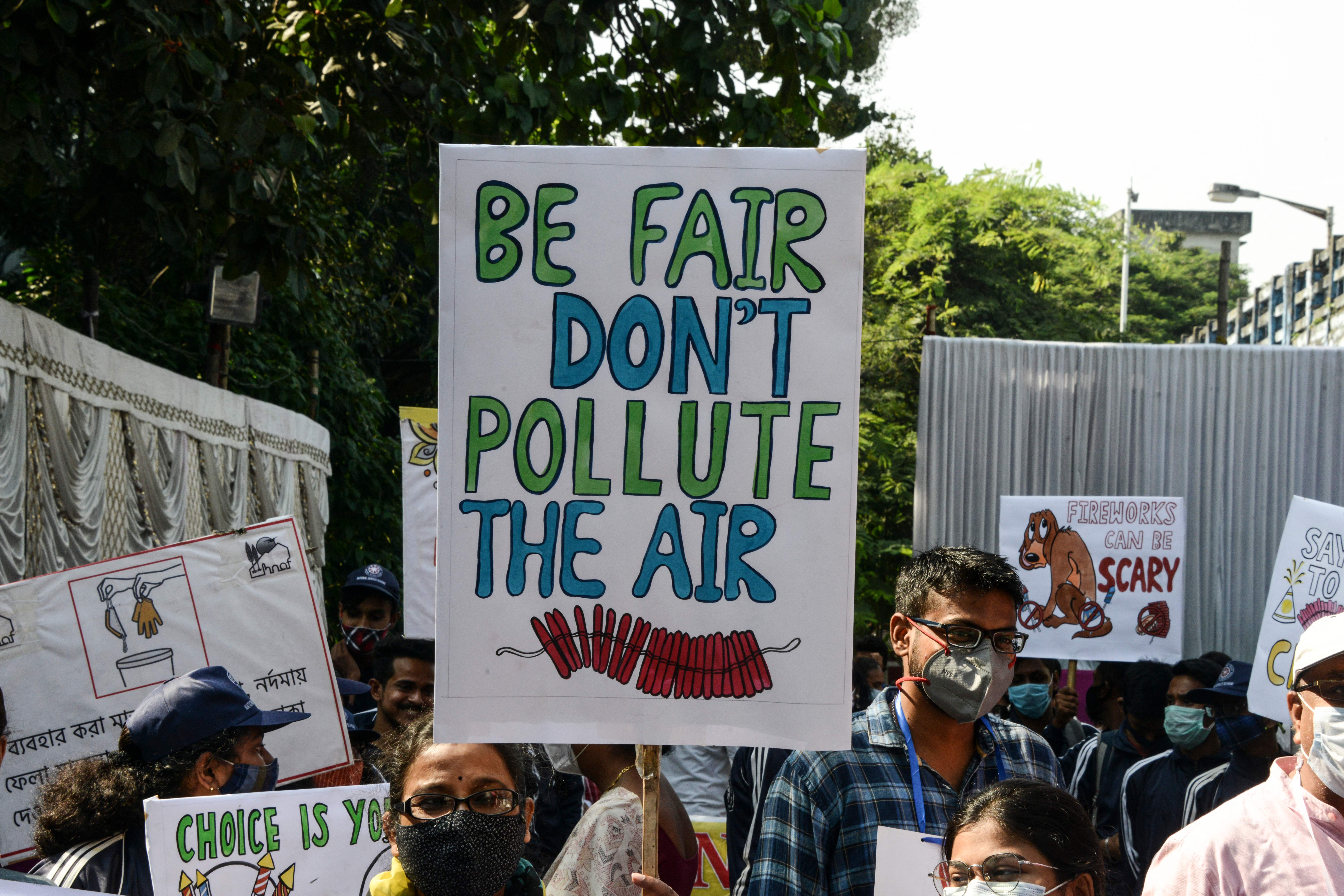How Indians are celebrating eco-friendly Diwali as the country suffers from world’s worst air pollution
‘With our Prime Minister attending Cop26 and pledging to slash one billion tonnes of emissions, the least we can do as residents of India is to celebrate an eco-friendly Diwali,’ a resident of Pushkar tells Peony Hirwani

Diwali — the Hindu festival of lights — is one of the most important dates in the religious calendar in India, celebrating the triumph of light over darkness, good over evil, and knowledge over oblivion. It is also celebrated by more than a billion people across different faiths around the world.
The festival sees families and friends get together to share conversations and meals, conduct rituals in honour of the gods, light traditional lamps and – certainly in more recent generations – burst large numbers of fireworks.
This latter element of the festivities has, especially in the plains of northern India, meant that Diwali comes with the inevitable drawback of an alarming dip in air quality. In 2020, the Central Pollution Control Board of India said that “almost all pollutants reported higher values on Diwali Day and pre-Diwali day.”
It has now become its own sort of tradition that each year the air quality in Delhi and the surrounding regions plunges into the “severe” category, with firework smoke adding on top of the already toxic soup of winter smog caused by factors including crop burning in neighbouring states, traffic pollution, major industries and a boom in construction work after the monsoons.
The air pollution crisis has led some Indian states including Delhi to ban fireworks altogether in recent years, or mandate that only “green” crackers with reduced emissions are used.
Enforcement of the rules is minimal, however, leaving it more or less a personal choice for individuals and families as to whether or not they comply. While inevitably many fireworks will still be burned on Thursday night, there are families, communities and businesses across the country coming up with new eco-friendly ways to celebrate Diwali.
“My family has pledged to not use any firecrackers this year. Be it eco-friendly or not,” says Amrita Raghuvanshi, a mother and housewife hailing from Jaipur. “Instead, we have decided to draw rangolis (a traditional Indian art form using coloured sand or powder to decorate a floor, courtyard, or other flat surface) using organic colours to decorate our home.”
“After all the rituals are over, my family will exchange gifts, have a feast, and watch DDLJ or Lagaan (two Bollwood classics) on the projector,” says Sunita Jain from Pushkar, another town in northern India’s Rajasthan state. “The only twist in our celebration is that we can only give sustainable gifts to each other.”
With gift-giving, feasts and decorations a key part of any family’s Diwali, businesses that benefit from this expenditure are adapting to the demand from customers for eco-friendly options.
Instead of sending out plastic-wrapped Diwali gifts to workers and clients, for instance, there is a clear trend among business owners to opt for sustainable packaging.
One example is Delhi-based brand Shuffling Suitcases, which has sent out plantable patakhas (fireworks) to their customers as a token of appreciation for this festival. The cleverly-designed package looks like a colourful rocket or sparkler, but inside the wrapping is a seed instead of an explosive. On Diwali the user is encourage to plant and start watering the “firework” – and over time see what sprouts out. These “seed patakhas” are now available to buy at various shops and on Amazon.
“As much as we love to put on extra lights during this festival, our family has decided to take the traditional route this year by putting up multiple sustainable diyas (a small cup-shaped oil lamp made of baked clay) and save electricity,” says Raagini Mehta, who hails from New Delhi. “Our community has also strictly banned the use of fireworks as the last few years has caused our city a lot of harm.”
While Delhi – the most polluted capital in the world – and its surrounds are becoming synonymous with smog in the winter, experts say other Indian cities risk following suit if the crisis is not tackled. According to researchers from the University of Chicago, even in other major cities like West Bengal’s Kolkata, where the pollution is not so obvious, the sort of levels seen in 2019 can knock nine years off a resident’s life expectancy.
This year, on 31 October, the residents of Siliguri in West Bengal protested to raise awareness of the air pollution spike caused by Diwali fireworks. They held placards with slogans like “say no to crackers”, and “fireworks can be scary” while walking down the street.
“It is all so scary. With our prime minister attending the Cop26 summit and pledging to slash one billion tonnes of emissions, the least we can do as residents of India is to celebrate an eco-friendly Diwali,” says Jain. “The festival is about the feeling of belongingness and warmth, rather than all the other harmful things we have been relying on for so long.”
Subscribe to Independent Premium to bookmark this article
Want to bookmark your favourite articles and stories to read or reference later? Start your Independent Premium subscription today.

Join our commenting forum
Join thought-provoking conversations, follow other Independent readers and see their replies